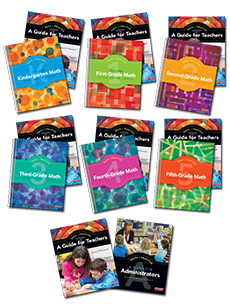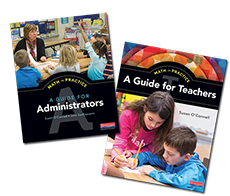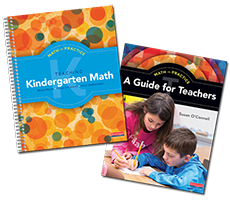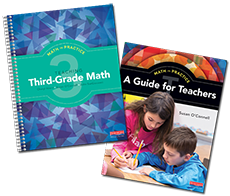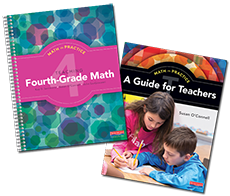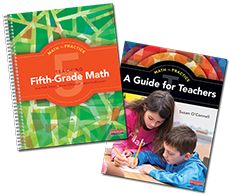Teaching and learning math can be hard. Math in Practice is like a math coach for every teacher. This grade-by-grade resource is filled with strategies and support for teaching math more confidently and effectively.
-
Overview


Math in Practice is a standard-based, professional learning resource from Sue O'Connell and colleagues. This grade-by-grade K–5 resource fits with any math curriculum you are using. It identifies the big ideas of math content and best-practice teaching, unpacking essential teaching strategies and detailing why those strategies are powerful.
Math in Practice is not another curriculum; it’s professional development in a book! It supports teachers, administrators, and entire school communities as they:

Guide students into deeper math understanding
Respond to the challenges of their math curriculum
Support students who are struggling, excelling, and anywhere in between -
Grade-Level Books
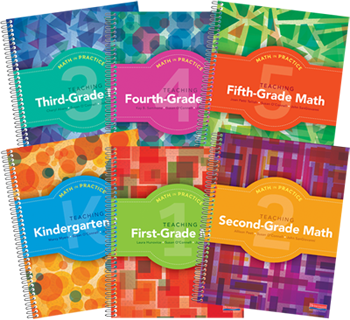
Each grade-level book is organized into modules that carefully unpack the specific math content taught at each grade, K–5. Rather than being used in order, teachers can select modules as needed based on their curriculum map, areas of instructional focus, or reteaching needs.
Every module provides:
- insights about the key math ideas
- teacher notes highlighting approaches for promoting student understanding
- a wealth of classroom tasks and activities illustrating the specific strategies
- an extensive collection of corresponding online resources
Click below to see the full list of modules in each grade-level book:
-
Guide for Teachers

The Guide for Teachers lays out big ideas in best-practice math instruction, including topics such as math talk, modeling, and differentiation.
Topics addressed include:
- Asking questions that stimulate student thinking
- Making sense of and connections between mathematical ideas
- Using representations and models effectively
- Helping students communicate about math
- Learning from meaningful formative assessment
-
Guide for Administrators

The Guide for Administrators helps principals, coaches, and other leaders know what to look for in effective math classrooms and how to support teacher growth.
Topics addressed include:
- The importance of ongoing professional development
- What to look for in the “new” math classroom
- How to support teachers and promote effective instruction
- Ideas for intervention and assessment across an entire school
- Support for working with parents



 Facebook Group | MIP
Facebook Group | MIP



